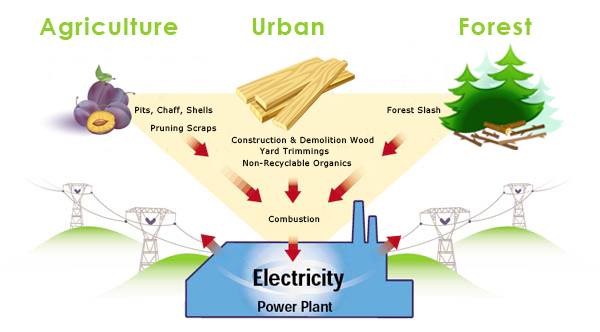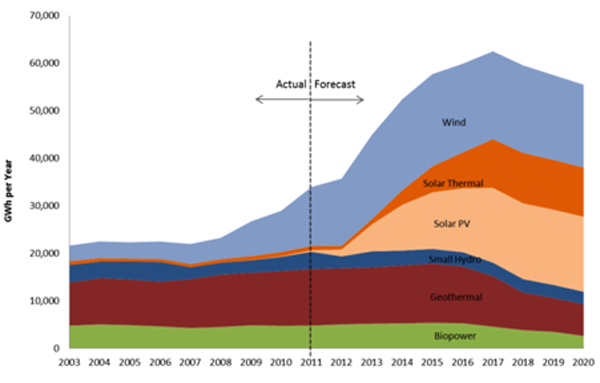Biomass is a clean, renewable alternative to fossil fuel plants
Biomass is an eligible renewable resource under California’s 33% by 2020 Renewable Portfolio Standard requirement. Much like other renewable resources such as solar, wind and geothermal, California has an abundance of biomass residues from the state’s agricultural, forest, and urban waste streams to make this technology 12% of all the renewable produced in this State. Using biomass to produce energy reduces the need for traditional disposal options for biomass such as landfill disposal or burning in place, while reducing dependence on fossil energy sources.
The biomass process utilizes only leftover residue material as its fuel source thereby maximizing the benefits provided by the asset while minimizing the impact on the environment.
One issue with California’s efforts to increase renewable energy use is that many forms of renewable energy, particularly wind and solar, introduce a new kind of uncertainty to the electric grid because of their unpredictable natural fluctuations in energy production. Biomass generators, by way of contrast, are highly reliable, and can be scheduled to provide power to the grid with the same certainty as conventional generating resources.
A second byproduct about renewable energy is that in many cases the renewable resources are located in remote locations, and can only provide useful power to the state if major transmission-line projects are built. Due to the availability of biomass resources throughout California, biomass generators can be located strategically to have ready access to existing transmission lines. In fact, in some cases biomass facilities are interconnected to remote parts of the transmission grid that are inherently weak, and these facilities provide valuable support services, such as voltage stabilization and var support, and enhanced reliability.
Biomass energy not only helps the State meet its renewable mandates, because it provides a variety of benefits other renewables cannot, it better secures the long-term success of our renewable future.

